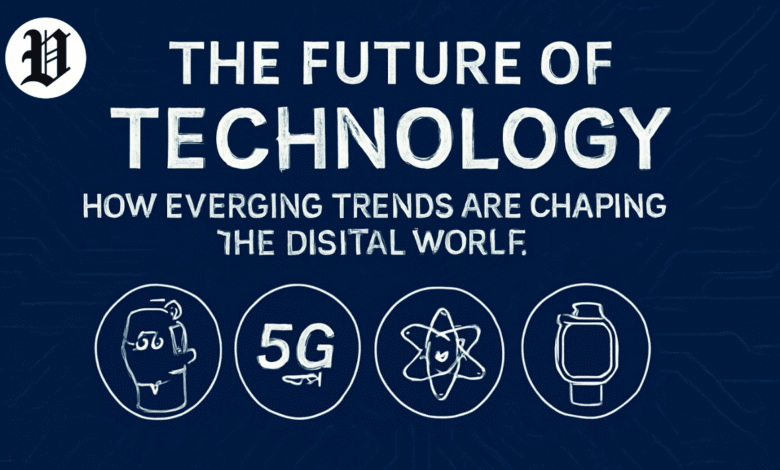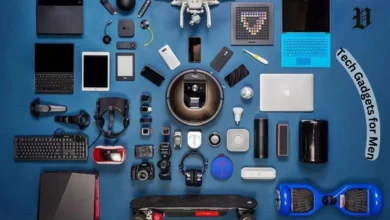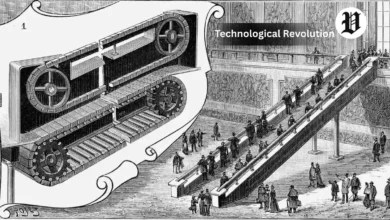The Future of Technology: How Emerging Trends Are Shaping the Digital World

I’m sitting in my cozy home office, the city skyline outside my window pulsing with life—screens glowing, devices humming, a quiet reminder of how far we’ve come. There’s a thrill in the air, but also a flicker of unease. Technology isn’t just moving forward; it’s weaving itself into the core of who we are, like a thread tugging us toward a future that’s equal parts breathtaking and uncertain. Those childhood dreams of robot sidekicks and instant connections across the globe? They’re not quite reality, but trends like artificial intelligence, 5G networks, blockchain technology, quantum computing, and smart tech are painting a world that feels like it’s teetering on the edge of magic. We’re at the dawn of a digital renaissance—machines learning our habits, data zipping at lightning speed, trust becoming unshakable. Yet, as I sit here, I can’t help but wonder: are we truly ready for how these changes will reshape our lives, our work, our very sense of self?
Let’s dive into these trends, not as a checklist of tech jargon, but as a story of how they’re transforming our world. This is about the emotional highs of what’s possible and the quiet doubts that linger, because technology isn’t just wires and code—it’s about us, our hopes, our fears.
Artificial Intelligence and Machine Learning: The Soul of Tomorrow’s Industries
Artificial intelligence and machine learning aren’t just buzzwords anymore; they’re like quiet companions reshaping our world. Picture a doctor in a hectic emergency room, buried in patient charts, when an AI tool whispers a warning about a brewing outbreak. Or a financial analyst catching a fraud pattern that slips past human eyes. In healthcare, AI is turning guesswork into precision with predictive diagnostics and tailored treatments that feel almost miraculous. In finance, machine learning streamlines investments and spots anomalies in a flash, though it stirs whispers of jobs at risk. Entertainment thrives on AI-powered recommendations that seem to know your heart better than you do, crafting stories just for you. And in retail, smart systems predict what customers want, cutting waste and making shopping feel personal.
But doesn’t it feel a little strange? I’ve watched AI grow from clunky bots to near-human helpers, and it makes me pause. Jobs might vanish as automation surges, but new ones—like AI ethics experts—are sprouting up. Then there’s the heavier stuff: biased algorithms, privacy invasions, decisions gone wrong. Who steps in when AI crosses a line? Peering into the next decade, I wonder—could AI outshine human intelligence, leaving creativity and empathy as our last strongholds? The AI market is expected to leap from $371 billion in 2025 to over $2.4 trillion by 2032, driven by breakthroughs in natural language processing and generative models.
Here’s a look at how AI is reshaping key industries:
| Industry | AI Adoption Rates (2025) | Top AI Innovations | Market Projections (2025-2030) |
|---|---|---|---|
| Healthcare | 22-71% (varies by use, like predictive analytics) | AI-driven genomics, advanced imaging, generative AI for records | $39B in 2025 to $504B by 2032 |
| Retail | 31-80% (executives embracing automation) | Predictive inventory, personalized shopping experiences | Feeding trillions in efficiency gains |
| Entertainment | 20-30% (media/telecom in the lead) | AI-generated content, immersive AR/VR tools | Billions in personalized content value |
| Finance | 24-45% (revenue cycles, fraud detection) | Fraud detection, algorithmic trading, robo-advisors | Huge growth in security and speed |
These numbers show AI’s deep roots, but they also tug at a bigger question: how do we make sure this power lifts everyone up, not just a lucky few?
5G Connectivity: The Unseen Web Connecting Us All
Now, imagine a world where your car chats with traffic lights to dodge a jam, or a surgeon operates from halfway across the globe with no delay. That’s 5G technology, exploding in 2025 with 2.4 billion connections worldwide, set to hit 8 billion by 2029. North America’s leading with over 314 million connections, and it’s changing the game.
This isn’t just about faster Netflix—it’s the heartbeat of the Internet of Things (IoT), where billions of devices talk in real time. Smart cities are coming alive, with sensors fine-tuning energy use or boosting safety. Picture streetlights dimming when no one’s around, or trash bins pinging when they’re full. But as I think about it, a quiet worry creeps in: are we giving up too much privacy for this seamless world? 5G’s low latency could redefine autonomous vehicles or augmented reality, but spotty rural infrastructure shows progress isn’t even. Could 5G stitch the world together or pull it further apart? It’s a mix of excitement for a smoother life and concern about who’s watching in this always-on era.
Blockchain and Cryptocurrencies: Trust You Can’t Break
Beyond the crypto craze, blockchain technology is quietly rewriting how we trust. It’s like a digital vault—unhackable, transparent, unlike anything traditional systems offer. In supply chains, it tracks goods from farm to fork, slashing fraud and waste. In healthcare, it locks down patient records, streamlines trials, and fights fake drugs. By 2025, it’s also powering medical insurance and remote monitoring.
Cryptocurrency trends are buzzing, with stablecoins smoothing out everyday purchases and a potential bull run on the horizon. Venture funding in crypto could top $18 billion, with coins like Bitcoin ($80,000-$185,000 range), Ethereum, Hyperliquid, and Monero shining. But blockchain’s magic stretches further—think secure voting systems or protecting intellectual property, giving power back to people. The catch? Scaling up eats energy and slows things down.
Here’s how blockchain compares to traditional systems:
| Aspect | Blockchain Technology | Traditional Systems |
|---|---|---|
| Security | High (decentralized, cryptographic) | Moderate (centralized, prone to hacks) |
| Cost | Steep upfront, cheaper long-term (no middlemen) | Low setup, ongoing fees for upkeep |
| Transparency | Stellar (immutable public ledger) | Limited (controlled by central powers) |
| Scalability | Tough (slow consensus mechanisms) | Strong (centralized processing) |
This table shows blockchain’s strength in secure, open systems, but it sparks a thought: could we blend the best of both worlds?
Quantum Computing: A Glimpse into the Impossible
Quantum computing feels like stepping into a dream where the rules of reality bend. In 2025, breakthroughs are piling up—IBM and Google are scaling systems, Microsoft’s Majorana 1 processor uses topological qubits, and “magic state” distillation in logical qubits has unlocked fault-tolerant computing after years of work.It could crack codes that stump today’s computers, speed up drug discovery with mind-bending simulations, or crunch massive datasets in a blink for cryptography and optimization.
But its power stirs a chill—could it unravel current security systems, sparking a “quantum apocalypse”? I wonder: might it solve climate puzzles with unparalleled modeling? With a market potentially hitting $2 trillion by 2035, it’s a world of wonder and warning.
Smart Tech & Wearables: Tech That Feels Like You
Then there’s the tech we wear and live with—smart tech and wearables. Fitness trackers catch your heart’s rhythm, smartwatches call for help if you fall, and AI-powered earwear or rings track your health. The market, worth $109 billion in 2023, is racing toward $303 billion by 2029, growing at 18.58% a year. Smart homes with virtual assistants guess your needs, while IoT ties wearables to health networks.
Think of a wearable nudging you about poor sleep—it’s like a friend who cares. But I wonder: are we leaning too hard on these devices, exposing too much data? AI integration could predict health risks, and I muse: could smartր
Smart Tech & Wearables: Tech That Feels Like You
fall, and AI-powered earwear or rings track your health. The market, worth $109 billion in 2023, is racing toward $303 billion by 2029, growing at 18.58% a year. Smart homes with virtual assistants guess your needs, while IoT ties wearables to health networks.Think of a wearable nudging you about poor sleep—it’s like a friend who cares. But I wonder: are we leaning too hard on these devices, exposing too much data? AI integration could predict health risks, and I muse: could smart homes soon adapt to our emotions? In smart cities, 5G ties it all together, boosting efficiency and wellness.
Frequently Asked Questions: Navigating the Tech Frontier
As I dive into this whirlwind of innovation, questions bubble up, the kind you’d toss around over coffee with friends. Here’s a handful that keep coming up:
How is AI really shaking up jobs?
It’s automating the repetitive stuff—think data entry or basic customer service—but it’s also sparking new roles, like AI trainers or ethics specialists, where human intuition pairs with tech to create something new.
Is 5G safe for everyone to use?
The health concerns linger, but studies so far say it’s in line with older networks if properly managed.
The bigger worry?
Keeping your data private in a world where everything’s connected.
What’s blockchain doing besides powering crypto?
It’s locking down healthcare records so they’re tamper-proof, tracking supply chains to cut fraud, and could even make voting or copyright protection more secure by putting control in our hands.
When will quantum computing hit the mainstream for businesses?
We’re seeing it in 2025 for things like drug research simulations, but it’s likely a few years out for everyday use. Smart companies are already planning for its game-changing potential.
Can wearables be trusted for medical needs?
They’re getting sharper with biosensors for things like heart rate or hydration, but they’re more of a helpful sidekick than a doctor replacement right now.
These questions remind me we’re not just chasing tech for tech’s sake—it’s about understanding how it fits into our lives.
Reflections on the Horizon: A Symbolic Closure
As I look out at the skyline, its glow a testament to human dreams made real, these technologies—artificial intelligence, 5G, blockchain, quantum computing, smart tech—feel like more than tools. They’re rewriting our story, tying us closer together in ways we couldn’t have imagined. They bring ease and wonder, but also questions about ethics and equity that demand our care.
What’s next? Maybe AI becomes a partner with heart, 5G builds a truly global community, blockchain offers unshakeable trust, quantum unlocks secrets of the universe, and wearables become part of who we are. The future’s not written—it’s ours to craft with thoughtfulness and courage. Will we rush in with open hearts or step carefully to hold onto what makes us human? The path ahead is as thrilling as it is profound.





One Comment